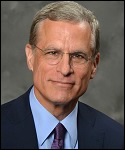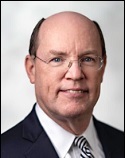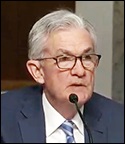By Pam Martens and Russ Martens: September 6, 2022
On August 11, the Attorney General of the U.S. Department of Justice, Merrick Garland, told the American people at a press conference that: “Faithful adherence to the rule of law is the bedrock principle of the Justice Department and of our democracy. Upholding the rule of law means applying the rule of law evenly, without fear or favor.”
That was certainly not true of Eric Holder’s Justice Department under President Obama, nor was it true of William Barr’s Justice Department under President Trump. In fact, just the opposite was true. Under Holder, the Justice Department functioned as a coverup and white-washing mechanism for a crime syndicate of powerful players on Wall Street. (See here and here.) Under Barr, the Justice Department took a machete to the rule of law and sculpted an art form out of doling out favorable treatment to criminal actors.
Today, despite Merrick Garland’s lofty words about operating without fear or favor, there is a strong stench surrounding the lack of action by the Justice Department against former Dallas Fed President Robert Kaplan — a former Vice Chair of Goldman Sachs.
This Wednesday marks the one-year anniversary of Wall Street Journal reporter Mike Derby setting off a five-alarm media fire with his reporting that Kaplan had “made multiple million-dollar-plus stock trades in 2020,” a year when Kaplan had inside information on the unprecedented actions the Fed was taking to support Wall Street and the U.S. economy during the pandemic as a voting member of the Fed’s Federal Open Market Committee (FOMC).
Derby’s article was the launch pad for the largest trading scandal at the Fed in its 109-year history. Kaplan resigned his post on September 27, 2021 along with Boston Fed President Eric Rosengren, who had made much smaller trades in real estate investment trusts. The Vice Chair of the Fed, Richard Clarida, stepped down in January following scrutiny of his trading. But what Rosengren and Clarida had done, based on known facts to date, dramatically paled in comparison to what Kaplan had been doing for five continuous years.
When Wall Street On Parade obtained Kaplan’s trading records from the Dallas Fed shortly after Derby’s article had run, it became clear that the stock trading was the least of the problem. Kaplan had actually been trading a far more sinister instrument for a man sitting on inside information. With the apparent approval of the then General Counsel/Ethics Officer of the Dallas Fed, Sharon Sweeney, who had signed her name to Kaplan’s trading records, Kaplan had been placing million-dollar-plus trades in S&P 500 futures and had been doing so for the entire five years he had been at the Dallas Fed. (See Kaplan’s financial disclosure forms from 2015 through 2020 here.) Equally outrageous, Kaplan had defied the public disclosure requirements of the Federal Reserve that required him to disclose the specific dates of his trades. Kaplan simply typed the word “multiple” where the specific date of each trade should have been entered. (In the early part of Kaplan’s career, he was a CPA for Peat Marwick Mitchell. He should have known that how he listed his trading transactions violated the very clear instructions that came with the reporting form.) Wall Street On Parade, other members of the press, as well as Senator Elizabeth Warren demanded that the Federal Reserve turn over Kaplan’s trading dates. The Fed refused. (For how Wall Street On Parade’s Freedom of Information Request was handled by the Fed, see here.)
S&P 500 futures allow an individual to trade almost around the clock from Sunday evening to Friday evening, while stock exchanges in the U.S. are open only on weekdays from 9:30 a.m. to 4:00 p.m. ET. S&P 500 futures gave Kaplan access to making directional bets on where the market would go after the stock market closed, which is typically when the Fed makes market-moving announcements. The most popular and liquid S&P 500 futures contract is the E-mini. A trader can obtain as much as 95 percent leverage on this contract – far more than the 50 percent leverage that is available for stock trades.
Kaplan was a sophisticated Wall Street veteran who worked at Goldman Sachs for 22 years, rising to the rank of Vice Chairman. As such, he would have certainly understood that the type of trading he was doing could subject him to an investigation for insider trading. (Goldman Sachs has declined to tell Wall Street On Parade if Kaplan did his trading at Goldman Sachs. The fact that Kaplan lists proprietary products from Goldman Sachs as “GS” on his financial disclosure forms suggests that he did at least some of his trading there.)
The year 2020 presented a prime opportunity for a nimble trader (with inside information on actions the Fed planned to take) to make large profits in the stock market from short-term trading. As a result of the lockdowns from the pandemic, GDP fell by 31.4 percent in the second quarter of 2020– the largest decline on record. At numerous times during 2020, the Fed was making dramatic market-moving announcements of interest rate cuts and the creation of a multitude of emergency lending facilities and emergency measures. The Dow Jones Industrial Average first gyrated to a year-to-date loss of 30 percent in late March 2020 and then climbed on the Fed announcements to set an all-time high in November 2020.
The Federal Reserve had rules against the very type of speculative trading done by Kaplan for decades. Then those rules mysteriously vanished into thin air.
On August 12, 1977, the Comptroller General of the U.S., Elmer Staats, filed a report with Congress in which he warned that the Federal Reserve’s financial disclosure system was woefully lacking. Staats specifically called out the Fed’s failure to define with specificity what constituted prohibited “speculative dealings” for its employees.
Staats notes in the report:
“Federal Reserve regulations on standards of conduct are issued to each Board employee. Specific Board prohibitions on financial interest state that an employee may not: Have a direct or indirect financial interest that conflicts substantially, or appears to conflict substantially, with his duties and responsibilities; Engage in speculative dealings (as distinguished from investments) in securities, commodities, real estate, exchange, or otherwise. Frequency of trading, the use of credit, and particularly transactions to take advantage of short-term price fluctuations would be significant indications that dealings were speculative.”
That last sentence in the above paragraph is the quintessential definition of what Kaplan was doing in his trading of million-dollar-plus trades in S&P 500 futures.
This Federal Reserve rule prohibiting speculative dealings was still in force at the Federal Reserve on December 19, 1995 because the following reference appears in the Federal Register for that date:
“A provision of the Board’s current ethics rules prohibits Board employees from engaging in speculative dealings. See 12 CFR 264.735–6(d)(iii).”
Looking at the Federal Reserve Board of Governors’ ethics rules in 2021 and those that have been published for each of the 12 regional Federal Reserve banks, we found zero references to “speculative dealings.”
What we did find, however, was the following sentence in 11 of the 12 regional Federal Reserve banks’ codes of conduct: (The Atlanta Fed words the statement differently but with the same overall meaning.)
“Each employee has a responsibility to the Bank and to the System to avoid conduct which places private gain above his or her duties to the Bank, which gives rise to an actual or apparent conflict of interest, or which might result in a question being raised regarding the independence of the employee’s judgment or the employee’s ability to perform the duties of his or her position satisfactorily.”
On February 18 of this year, the Fed formerly adopted new trading rules for its officials as a result of the media storm over its trading scandal.
Making the Fed’s trading scandal all the more urgent for a criminal investigation by the Justice Department is the fact that there is significant reason to believe that two mega banks on Wall Street (Goldman Sachs and Citigroup), both of which are supervised by the Fed, may have been involved in the trading by Kaplan and Rosengren, respectively. (Kaplan’s financial disclosure of proprietary products at Goldman Sachs raises the suspicion of his trading there; Rosengren’s wife, with whom he traded in a joint account, was given a margin account by Citigroup’s Citibank.)
Since it does not appear that any brokerage firm that was executing trades for Kaplan blew the whistle on him, the obvious question is, why not? Was there a quid pro quo going on between Kaplan and a Wall Street trading house?
Every licensed broker that would have been placing Kaplan’s “over $1 million” trades is required under regulatory rules to “Know Your Customer.” The rule states that “Every member shall use reasonable diligence, in regard to the opening and maintenance of every account, to know (and retain) the essential facts concerning every customer and concerning the authority of each person acting on behalf of such customer.”
In this case, knowing your customer should have meant frantically calling your compliance department when an officer of the U.S. central bank, who sits on some of the most sensitive, non-public market intelligence in the world, instructs you to make “over $1 million” trades, multiple times, in S&P 500 futures contracts. The S&P 500 futures trade request by Kaplan should have convened an immediate, all-hands-on-deck meeting of the entire compliance department of the brokerage firm. Instead, the trading went on unimpeded for more than five years, according to Kaplan’s financial disclosures.
Every brokerage firm has a compliance department that monitors the trades being placed by its brokers. The compliance department has access to the personal data for each client that indicates who their employer is, along with significant other personal information. Clients whose jobs involve having access to confidential market information, like an investment banker or a central banker, would have their trades closely monitored in a properly functioning compliance department.
In addition to the Know Your Customer Rule, the U.S. Treasury Department’s FinCEN (Financial Crimes Enforcement Network) has its own Customer Due Diligence Rule (CDD Rule). One of the requirements under the rule is that financial institutions “use a specific method or categorization to risk rate customers; or automatically categorize as ‘high risk’ products and customer types that are identified in government publications as having characteristics that could potentially expose the institution to risks.”
Every single safeguard that is built into the U.S. trading system to detect improper trading failed when it came to Kaplan. That suggests there were plenty of aiders and abettors – the very kind of case that belongs at the Justice Department, not at the Fed’s Inspector General’s Office, which reports to the Fed’s own Board of Governors. And yet, as far as the public knows, the Kaplan case remains in the hands of this conflicted investigator.
The nonpartisan watchdog, Better Markets, has repeatedly called on the Justice Department to open an investigation. Senator Elizabeth Warren called out a “culture of corruption” among high-ranking Fed officials and called for an independent insider trading investigation. But for an entire year, only silence has emanated from the Department of Justice on this critical matter of high public interest.
Yes, the Justice Department has had a lot on its plate over the past year. But this is not some minor matter. This is the central bank of the United States whose integrity impacts the financial confidence of both the American people as well as other central banks around the world.
On January 6 of this year, Dennis Kelleher, the President and CEO of Better Markets, said this regarding how Fed Chair Jerome Powell has handled the scandal:
“Rather than condemn that shameful conduct and come clean with the American people, the Fed has engaged in a cover up, refusing to disclose the facts or punish anyone. Indeed, the Fed Chairman himself has repeatedly minimized if not exonerated the trading, inaccurately and misleadingly blaming outdated Fed policies. Having taken those public positions, he then merely called for a self-investigation of the Fed by the Fed’s in-house Inspector General, who the Chair appointed and who reports to the Chair. The Fed’s IG investigating the trading, including his boss’s trading, and determining if his boss’s many public statements exonerating everyone at the Fed were inaccurate, false, or misleading will have little if any credibility.”
Kelleher is spot on when it comes to Powell, who actually said this about Kaplan on the day he stepped down as President of the Dallas Fed: “We are grateful for Rob’s six years of service as President of the Federal Reserve Bank of Dallas and as a valued colleague in the FOMC. He has been a passionate and forceful public voice on a wide range of issues, including the critical value of early childhood education and literacy. In addition, he strengthened the Bank’s economic research and played a very constructive role in Systemwide management, budget and technology efforts. We wish him well.”
This statement from Powell was prejudicial to an independent investigation but it was totally compatible with Powell’s background working for the vulture firm, the Carlyle Group, where he came by the bulk of his wealth.
Justice delayed is justice denied. It’s time for the Justice Department to find its public voice on the Kaplan investigation.





